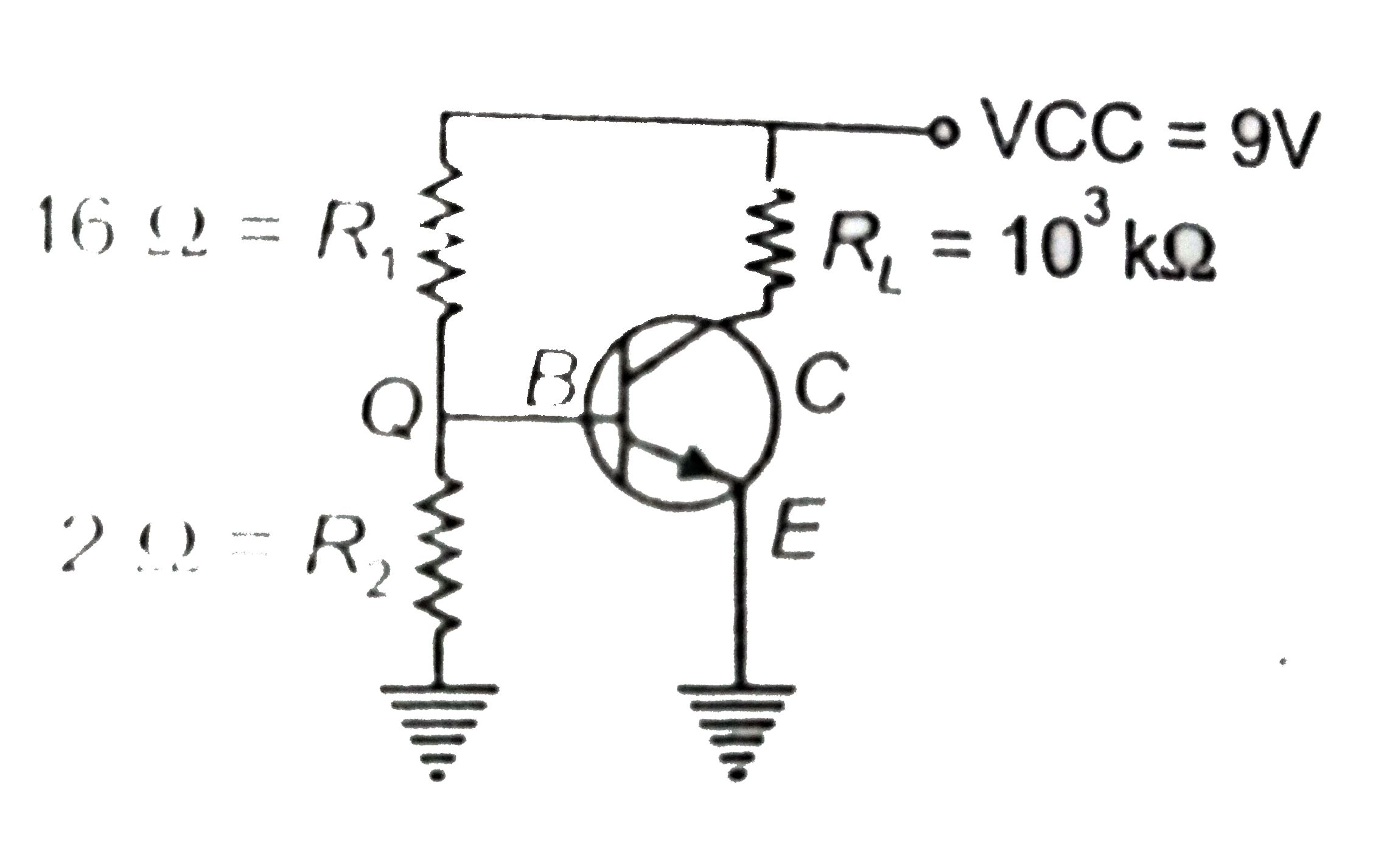A transistor is used in common emitter mode as an amplifier. Then
(1) the base-emitter junction is forward biased
(2) the base emitter junction is reverse biased
(3) the input signal is connected in series with the voltage applied to the base-emitter junction.
(4) the input signal is connected in series with the voltage applied to the base collector junction.
1,2 and 3
1 and 2
2 and 4
1 and 3
The correct Answer is:D
While using transistor as a common emitter amplifier the emitter base junction is forward biased and the signal to be amplified is connected in emitter base circuit.
Topper's Solved these Questions
- ELECTRONIC DEVICESBOOK - PRADEEPCHAPTER - ELECTRONIC DEVICESEXERCISE - LONG QUESTION ANSWER
2 Videos
- ELECTRONIC DEVICESBOOK - PRADEEPCHAPTER - ELECTRONIC DEVICESEXERCISE - PROBLEMS FOR PRACTICE
7 Videos
- ELECTRONIC DEVICESBOOK - PRADEEPCHAPTER - ELECTRONIC DEVICESEXERCISE - HIGHER ORDER THINKING SKILLS
1 Videos
- ELECTROMAGNETIC WAVESBOOK - PRADEEPCHAPTER - ELECTROMAGNETIC WAVESEXERCISE - II Focus multiple choice question
5 Videos
- ELECTROSTATICSBOOK - PRADEEPCHAPTER - ELECTROSTATICSEXERCISE - ASSERTION-REASON TYPE QUESTIONS
2 Videos
Similar Questions
Knowledge Check
A transistor is used in the common emitter mode as an amplifier then :–
(A) the input signal is connected in series with the voltage applied to bias the base collector junction
(B) the base emitter junction is reverse baised
(C) the input signal is connected in series with the voltage applied to bias the base emitter junction
(D) the input signal is connected in series with the voltage applied to bias the base collector junctionAA, BBA, DCA, CDonly CThe emitter base junction is forward biased and the base collector junction is reverse biased, in order to use a transistor as
AChokeBrectifierCamplifierDtransformerAssertion : In transistor common emitter mode as an amplifier is prefered over common base mode.
Reason: In common emitter mode the input signal is connected in series with the voltage applied to the base emitter function.AIf both Assetion & Reason are true and the reason is the not the correct explanation of the assertion , then mark (1)Bif both Assertion & Reason are true but the reason is not the correct explanation of the assertion ,then mark (2)CIf Assertion is true statement but reason is false, then mark (3).DIf both Assertion and reason are false statements, then mark (4)
Assertion : In transistor common emitter mode as an amplifier is prefered over common base mode.
Reason: In common emitter mode the input signal is connected in series with the voltage applied to the base emitter function.
View SolutionAssertion : In transistor common emitter mode as an amplifier is preferred over common base mode.
Reason : In common emitter mode the input signal is connected in series with the voltage applied to the base emitter function.
View Solutionin common emitter amplifier, the emitter base junction is
View SolutionAt the base emitter junction of a transistor one finds
View SolutionConsider an n-p-n transistor with its base - emitter junction forward biased and collector base junction reverse biased . Which of the following statements are true?
View Solution

